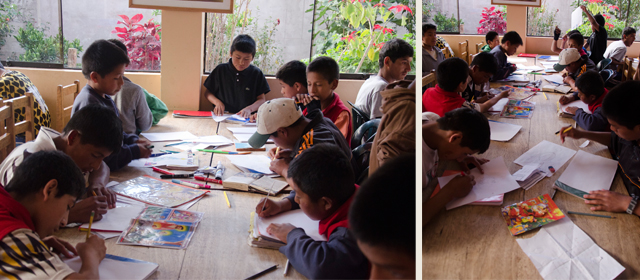In an effort to get construction projects lined up for the summer work teams, Billy has been visiting a few of our Girasoles homes over the past few weeks to meet with the directors and figure out possible projects and budgets. Since I know nothing about this, and we have been busy with other things, he has typically made the trip on his own. But, when time came for him to go to our home in the Sacred Valley, we decided to take a few days to visit & stay with the Girasoles and see a few Incan ruins in the area – including Machu Picchu. It was the first time I was back in the Sacred Valley and at the home since 2009.
We spent the first day walking around colonial Cusco.

Since I’m a Peruvian resident now, we both were able to go to Machu Picchu on the “Peruvian price” – that’s just 20 soles roundtrip for the train, 36 soles for the bus from the train to the entrance and 65 soles entrance to Machu Picchu (regularly about $250). We arrived in Aguas Calientes at 6:30am and the return train didn’t leave til 9:30pm, which afforded us a lot of time to explore Machu Picchu and the town. We both had been to Machu Picchu before, but this was our first time together.

We walked to the Inca Bridge (within Machu Picchu) and thankfully we didn’t have to cross it.

We also walked all the way up to Intipunku – the Sun Gate. This is where the Inca Trail ends and the first look at Machu Picchu. In the right photo, Machu Picchu is the clearing on the top of the mountain I’m pointing to, and the brown path is the road from Aguas Calientes up to the main entrance.

The next day, We spent time with the Girasoles boys drawing pictures, and later went out to dinner with all of them.

We also visited their new home which should be completed by mid-March (and Billy figured out some potential projects with Hector, the home director).

The kitchen and large dining room.


On our last day, we visited Salinas salt mines just outside of Maras. Since pre-Inca times, salt has been obtained in Maras by evaporating salty water from a local subterranean stream. The highly salty water emerges at a spring, a natural outlet of the underground stream. The flow is directed into an intricate system of tiny channels constructed so that the water runs gradually down onto the several hundred ancient terraced ponds. Almost all the ponds are less than four meters square in area, and none exceeds thirty centimeters in depth.

And drove through the beautifully green Sacred Valley to visit Moray, the Incan “agricultural laboratory” which consists of various circular terraces. The depth and orientation of the terraces with respect to wind and sun creates a temperature difference of as much as 15 °C (27 °F) between the top and bottom. It is thought that the large temperature difference was possibly used by the Inca to study the effects of different climatic conditions on crops.

It was a short 4 days in the rich, green Sacred Valley which left me wanting more time looking at the beautiful mountains, exploring the intriguing ruins, walking through the little pueblos throughout the valley and spending time with our Girasoles boys.
